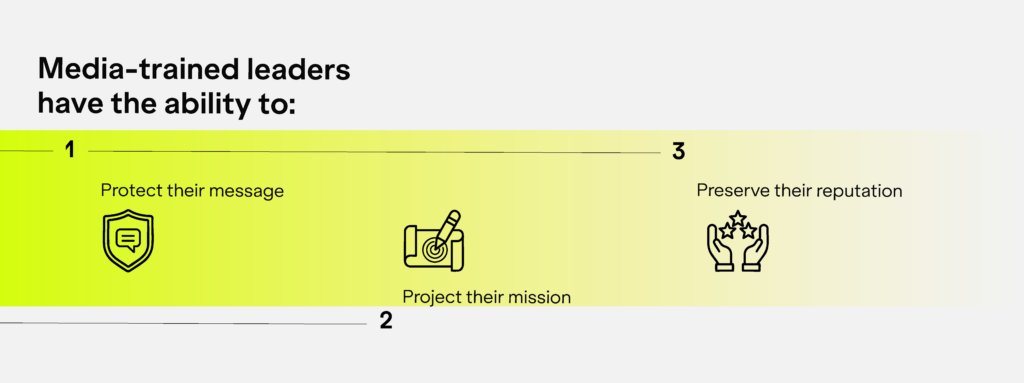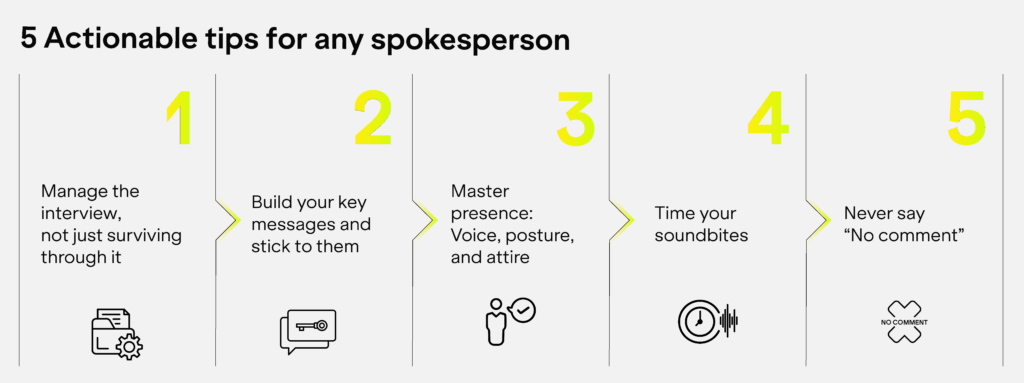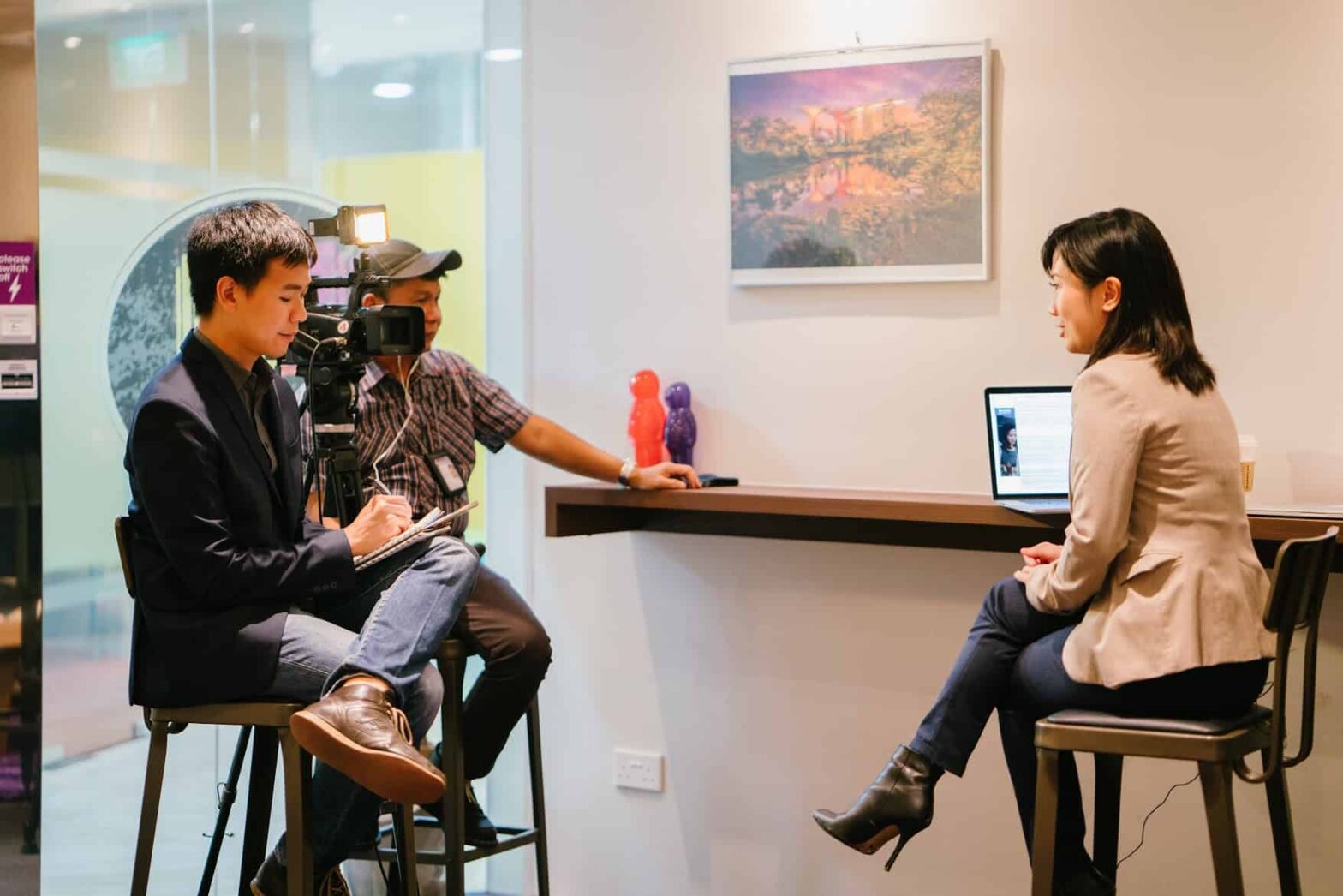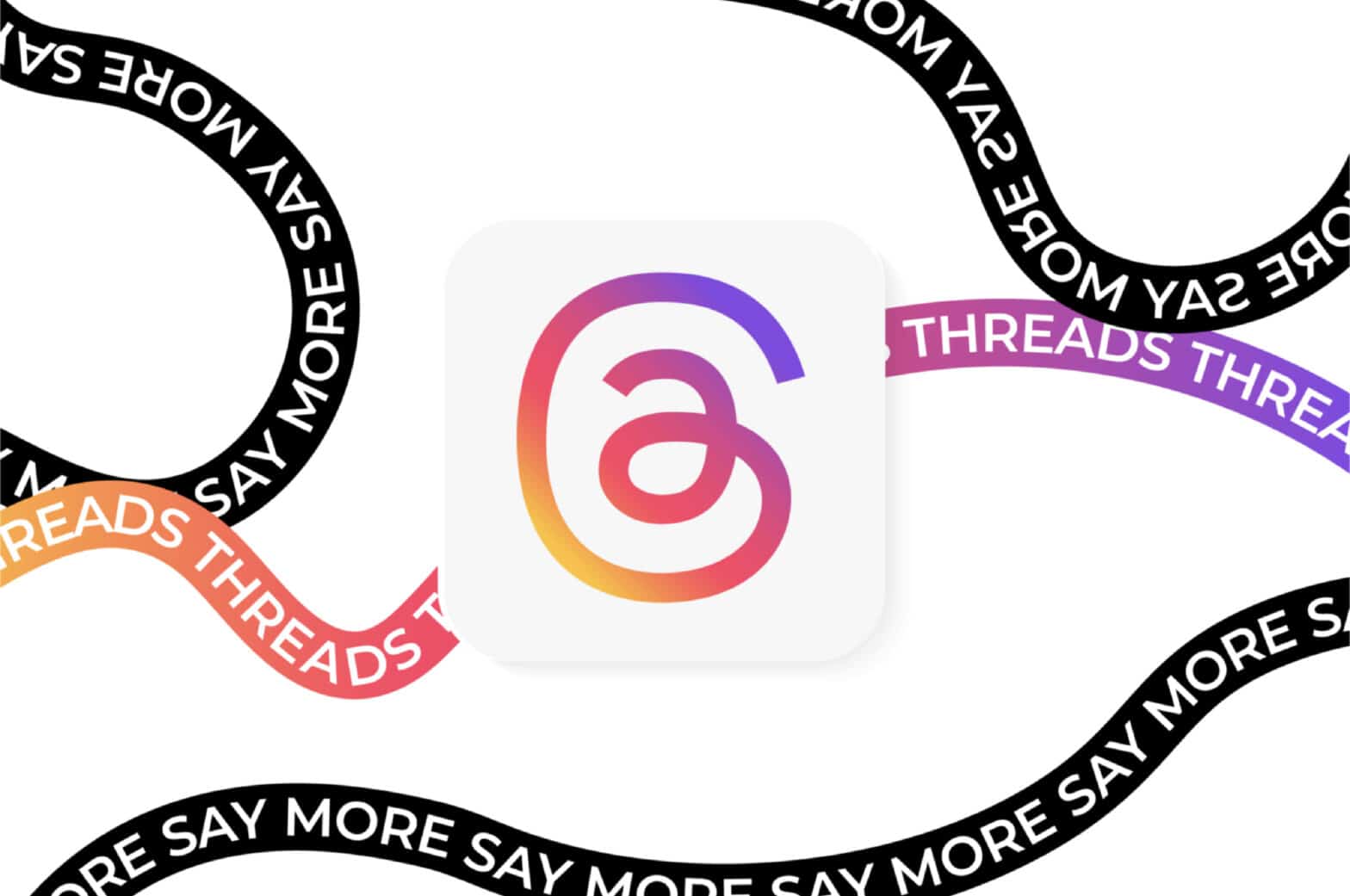In a world where news cycles refresh by the minute and interviews happen on everything from press conferences to online podcasts, every word from a company’s leadership might be quoted, clipped, and reshared in just a second. The pressure to “say the right thing” has never been higher. Yet, many C-level executives still walk into interviews underprepared, overconfident, or both.
Media training isn’t just about avoiding mistakes. It’s about owning your narrative and turning every public appearance into a strategic advantage. After all, people connect with people, not faceless brands. That’s why audiences and journalists alike are more interested in hearing directly from a credible, well-spoken spokesperson.
So if you’re a founder, CEO, or board member who hasn’t been media trained, it’s time to ask: Are you actively protecting your reputation or just hoping for the best?
Why C-level leaders must be media-trained?

To protect your reputation before you have to fix it
Media training gives leaders the tools to stay clear, consistent, and in control. A poorly chosen phrase, awkward body language, or unclear answer can quickly go viral but not in a good way. Your message therefore can be distorted faster than it takes to clarify it.
To turn every interview into a strategic opportunity
Most executives think of interviews as a test, when questions come, you answer them. But the best-trained leaders see them as platforms. Every conversation with the press is a chance to drive home your mission, share vision, and shape public perception. It’s not about answering every question, but it’s about landing your key messages.
To lead your message with clarify, beside charisma
To be able to “speak well” is never enough. You have to speak strategically. Media training helps refine not just what you say, but how you say it to ensure your points land with clarity and impact.
To build trust in any opportunities in advance
As we know how the public is fragile and misinformation is rampant everywhere, a leader who communicates with authenticity and coherence becomes an asset. Media training sharpens your presence, from voice and posture to tone and expression, to ensure your leadership feels grounded, human, and trustworthy.
5 Actionable tips for any spokesperson

Forget textbook theory. Effective media training is deeply practical, personalized, and aligned with your real-world business context. Even if you’re not heading into a press interview this week, here are 5 takeaways you can apply immediately:
Manage the interview, not just surviving through it
Shift from being passive respondents to narrative drivers. Practice through scenario simulations and real media Q&A drills, you can learn to redirect difficult questions, control timing, and reinforce your core messages without sounding robotic.
Build your key messages and stick to them
Before stepping into any interview, it is essential to define your key messages. These are the 2 to 3 core points you want your audience to remember, ideally no more. This number strikes the right balance enough to cover what matters but focused enough to be clear and memorable.
With strong key messages, you can stay on track even when questions take unexpected turns. They help you control the narrative, reinforce consistency across platforms, and make it easier for journalists to distill your story accurately. Most importantly, they ensure your audience walks away with the message you intended to deliver.
Master presence: Voice, posture, and attire
The interview performance is visual as much as verbal. You need to know how to project authority without arrogance by maintaining eye contact, managing gestures, and dressing in a way that reflects both your personality and your position.
Time your soundbites
Journalists love clear, punchy quotes. Practice answering in 15–20 second bites that are easy to clip and share. If you ramble, you risk being paraphrased, or worse, being misquoted.
Never say “No comment”
Even if you do not know how to frame tough questions, emphasize positive action. Make sure to never say “No comment” to anything. Instead, pivot with purpose:
“This isn’t my area of expertise, but what I can share is…”
“We’re still assessing the situation, but here’s what we’ve done so far…”
“It’s too early to confirm details, but our priority remains…”
This keeps you in control, protects your credibility, and avoids sounding evasive or unprepared.
Final thought: You’re the message
One of the most powerful lines we use in training is: “Be the spokesperson, not the answer person.”
The goal of media engagement isn’t to survive interrogation, but to communicate with leadership. What people remember is not just your words, but your presence. Your calm. Your clarity. Your confidence.
And that’s just one part of the story. Our media training sessions go beyond interviews. We help spokespersons understand the media landscape, gain insight into what journalists are really looking for, and learn rehearsal techniques. From delivering a keynote speech to managing a press conference, we equip leaders with the skills to show up and speak up strategically and authentically.
There are furthermore to discuss. If you’re ready to elevate your leadership presence across every public appearance, let’s talk.









